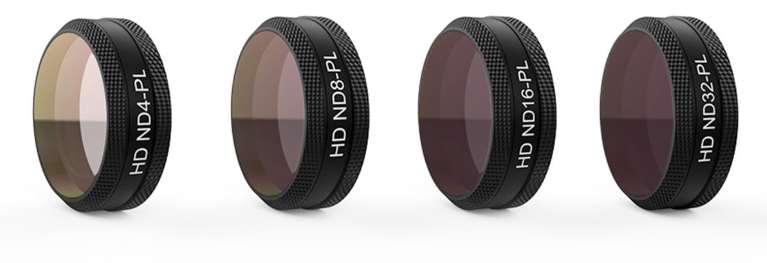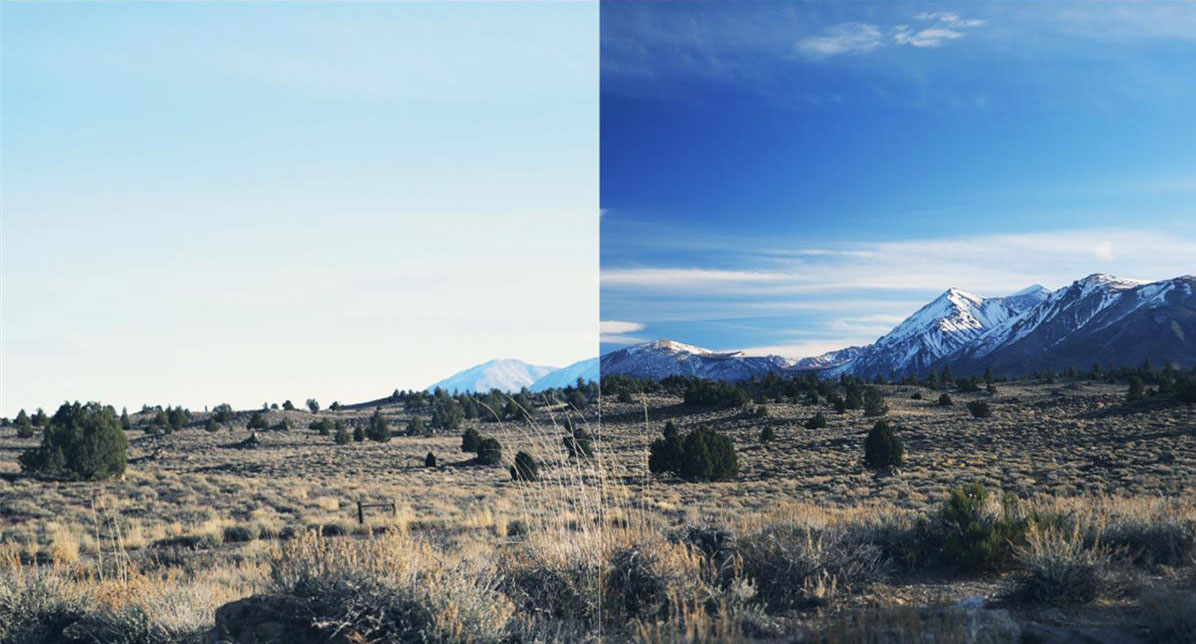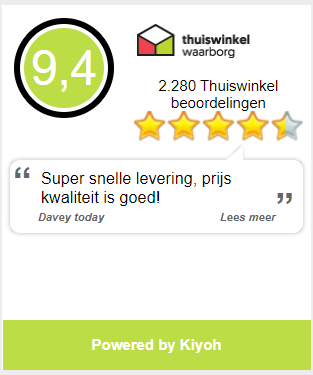ND / PL filters for your camera drone
Use ND filters for your camera drone!
Neutral Density (ND) and polarizing (PL) drone camera filters are intended to reduce and/or filter the amount of light entering the camera. When ND / PL filters are applied correctly, they can make a big difference in color depth and contrast, and videos become smoother and cinematic due to optimal shutter speed in combination with recording speed (frames per second).
View all ND / PL filters for DJI camera drones here .
Note: on the page with all ND filters, you can filter on the left for the drone for which you want to see all available camera filters. You do this by clicking on the " Which series? " filter and selecting the correct drone series.

What are Neutral Density (ND) filters for camera drones?
Neutral Density (ND) filters are a useful accessory for drones, as they can help reduce the amount of light entering the camera, allowing greater control over exposure and a wider range of creative options.
One of the main benefits of using ND filters on drones is the ability to use slower shutter speeds, which can help create smooth, cinematic images. A slower shutter speed can help capture the movement and progression of a scene, such as water or clouds, in a more natural and aesthetically pleasing way. ND filters can also help eliminate the "jello" effect, a type of distortion that can occur when the drone's camera is subjected to strong vibration or movement.
ND filters can also be useful for capturing high-contrast scenes, such as landscapes with bright skies and dark shadows. By reducing the amount of light entering the camera, ND filters can help balance exposure and capture detail in both the highlights and shadows, resulting in more evenly lit and dynamic images.
In addition to the creative benefits, ND filters can also extend a drone's battery life by reducing the amount of work the camera has to do. This can be especially useful for drones used for long-duration flights or capturing time-lapse images.
Overall, ND filters are a valuable tool for any drone photographer or filmmaker looking to improve the quality and creativity of their aerial shots. They are relatively inexpensive and easy to use, and can make a significant difference in the end result.
What strengths of ND and ND/PL filters for drones are there?
ND filters come in different "strengths" for drones, usually ranging from ND4 to ND64 filters, where you use an ND4 filter with little sunlight (cloudy) and an ND64 (or higher) filter with extremely bright sunlight. In the Netherlands we usually use an ND4 or ND8 filter, and an ND16 filter when it is sunny and an ND32 filter when it is really sunny.
The advantages of ND filters
Polarized (ND/PL) Neutral Density filters for camera drones
A polarizing filter is a filter for your lens and increases the color saturation and reduces reflections in water features, metal surfaces and glass. Objects behind these surfaces are more visible, the contrast is increased and it is an effect that cannot be achieved with programs such as Photoshop.
Polarizing neutral density (ND) filters are a type of filter that combines the properties of a polarizing filter with those of a standard ND filter. Polarizing filters are used to reduce glare and reflections and work by blocking certain wavelengths of light that cause these effects. ND filters, on the other hand, are used to reduce the amount of light entering the camera, allowing greater control over exposure and a wider range of creative options.
The combination of these two types of filters can provide a number of benefits for drone photography and videography. For example, a polarizing ND filter can help reduce glare and reflections on surfaces such as water, glass or metal, resulting in more vibrant and saturated colors and improved contrast. This can be especially nuseful when capturing landscapes, cityscapes, or other scenes that contain reflective surfaces.
Polarizing ND filters can also be useful when capturing high-contrast scenes, such as landscapes with bright skies and dark shadows. By reducing the amount of light entering the camera and eliminating glare, polarizing ND filters can help balance exposure and capture detail in both highlights and shadows, resulting in more balanced exposed and dynamic images.
In addition to their creative benefits, polarizing ND filters can also help extend a drone's battery life by reducing the amount of work the camera has to do. This can be especially useful for drones used for long duration flights or capturing time-lapse images.
In summary, polarizing ND filters are a valuable tool for any drone photographer or filmmaker looking to enhance the quality and creativity of their aerial photos and videos. They are relatively cheap and easy to use and can make a significant difference in the end result.
The advantages ND & ND/PL filters for camera drones
- your photos and videos are less likely to be overexposed in bright sunlight,
- your images get more color depth and contrast,
- your videos become smoother/more cinematic,
- less glare and reflection (PL filters).
Adjust to the floor
PL filters should be set (on the ground) to the direction in which your drone will shoot for maximum effect. This takes time and preparation, but can give great results that are not possible otherwise.
(C)PL filters
Circular polarizing filters (CPL filters) are the most commonly used filters for. Polarizing filters can be rotated in the filter mount to achieve certain effects, such as increasing color saturation. The maximum effect is achieved when photos are taken at an angle of 90 degrees to the sun. By turning the filter, the effect of the polarizing filter can be seen through the viewfinder or on the camera's LCD screen. A second function of a circular polarizing filter is to reduce reflections in water features, metal surfaces and glass (shop windows, for example). Objects behind these surfaces are more visible through the use of the polarizing filter. An effect that cannot be achieved with programs such as Photoshop.
Different strengths of ND & ND/PL filters and when to use them
- CPL filter - reduces (polarizes) glare and reflection from eg water. Increases color saturation and contrast.
- ND4 filter - for use on cloudy days with fairly low light to reduce shutter speed by 2 f-stops.
- ND8 filter - for use on slightly cloudy days to reduce shutter speed by 3 f-stops.
- ND16 filter - for use on bright days to reduce shutter speed by 4 f-stops.
- ND8/PL filter - for use on slightly cloudy days to reduce shutter speed by 3 f-stops. Reduces (polarizes) glare and reflection from eg water. Increases color saturation and contrast.
- ND16/PL filter - for use on bright days to reduce shutter speed by 4 f-stops. Reduces (polarizes) glare and reflection from eg water. Increases color saturation and contrast.
- ND32/PL filter - for use in bright sunlight to reduce shutter speed by 5 f-stops. Reduces (polarizes) glare and reflection from eg water. Increases color saturation and contrast.
- ND64/PL filter - for use in very bright sunlight to reduce shutter speed by 6 f-stops. Reduces (polarizes) glare and reflection from eg water. Increases color saturation and contrast.
No posts found
Write a review



